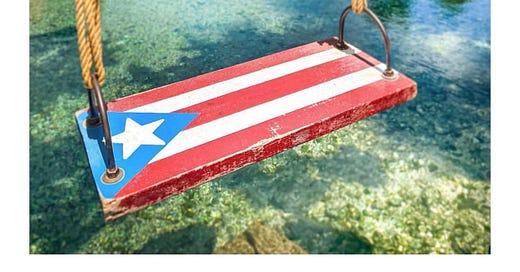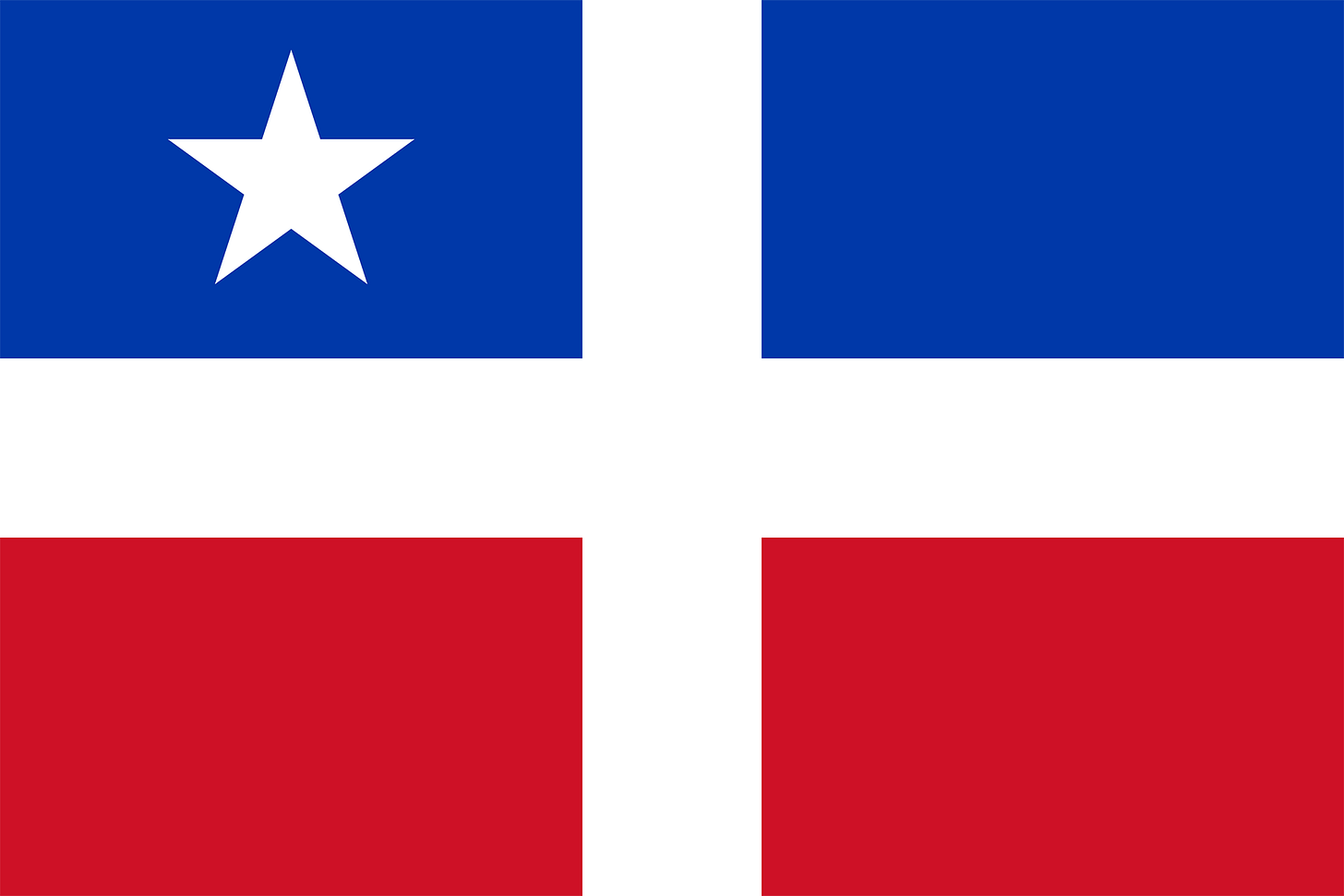Puerto Ricans Love Their Flag but it was Once Illegal to Fly
From the adaptation of a new design to a gag law preventing the flag from flying to the questionable accuracy of the blue in the triangle, here is a brief history of the Puerto Rican flag
(Photo by me. Swing with the painted Puerto Rican flag at Manantial Ojo De Agua in Vega Baja, Puerto Rico)
Growing up, I never understood why the neighborhoods of Brooklyn were covered in Puerto Rican flags. I mean, the flag was a staple in almost every neighborhood. It was hard to miss. Flying high from the fire escapes of apartment buildings and painted on the walls alongside the schools and libraries, it was impossible to question the pride of the Puerto Rican people but for some reason, I remember thinking to myself: How obnoxious.
I get it. You’re Puerto Rican. So am I.
But must we fly and display the flag at every chance we get?
As a child, you’re perspective is limited. Limited to the knowledge you have been given by your surroundings. Limited by the lack of interactions with the bigger world. Limited by the connections to your heritage and limited by what society wants you to believe. As a child, I didn’t understand the complexities of my heritage and its entanglement with culture and identity. It was something that was never explained to me, in that way. For me, being Puerto Rican was about the music, the traditions around the holidays, spending time with family, respecting my elders, asking for blessing from my abuela every time I saw her - “Bendicion, abuela” - flying the flag at parades, eating Mofongo, and most importantly, learning how to speak, read and write Spanish. That was my limited perspective.
I didn’t understand the flag nor did I know what it symbolized for my people. Until now.
The First Puerto Rican Flag
Starting in 1493, the Spanish empire controlled Puerto Rico for more than 400 years, a violent period marked by the genocide of the indigenous Taíno people and the importation of Africans forced into slavery.
On September 23, 1868, a rebellion broke out as a result of frustrations by the lack of political and economic freedom by the continued repression on the island of Puerto Rico. Known as the Grito de Lares (the “Cry of Lares”) and led by Dr. Ramón Emeterio Betances and Segundo Ruiz Belvis, this revolutionary battle attacked the exploitation of the Puerto Ricans by the Spanish colonial system and called for an insurrection. During this time, a flag was designed by Dr. Betances and embroidered by Mariana Bracetti. This flag was intended to become the flag of the republic.
This flag consists of a white Latin cross at the centre, "the width of its limbs being equal to one-third of the width of the flag [emblem]". The two upper rectangles are sky blue, the lower ones brilliant red, and a white five-pointed star is placed at the centre of the upper left rectangle. The flag was proclaimed the official representation of the Municipality of Lares in 1952 by the Municipal Assembly . Description of the flag is the following: The white cross conveys the desire for a homeland and redemption [or is it the recovery of their rights?]. The red refers to the blood shed by the heroes of the revolt. The star stands for liberty ["en el azul soledad" -- lonely in the blue?].
Our beloved Flag
Fast forward a few years to December 22, 1895, and the Puerto Rican Revolutionary Committee in Manhattan presents the flag design we all recognize today. The flag was not designed on the island but instead was designed as a byproduct of Puerto Rican diaspora representing a message of a self-governing mission.
With its red and white stripes, sky-blue triangle, and white star, it was a deliberate inversion of the Cuban flag’s color scheme, with the Lares flag’s blue substituted for the darker Cuban blue. While Cuba would win its independence from Spain following the Spanish-American War in 1898, Puerto Rico would be passed from one colonial power to another when the United States took control of the island the same year.
In the mid-1900s, another pro-independence coalition adopted the new design. This caused another attempt to oppress the Puerto Rican people. Welcome to the Puerto Rican Gag Law.
La Ley de la Mordaza
In an effort to crush the movement, Puerto Rico’s US-appointed legislature passed La Ley de la Mordaza, or the Gag Law, in 1948, which among many other restrictions made displaying the flag punishable by up to 10 years in prison
It was illegal to display or own a Puerto Rican flag; even in one’s own home. It came to be known as the Gag Law; and this flag provision to the law allowed police and national guardsmen to enter anyone’s home without a warrant and search and seize all property, regardless of probable cause.
While the Gag Law would eventually be deemed unconstitutional and although the commonwealth project was established in 1952, the colonial government couldn’t resist in dictating what the finally flag would look like. Adopting the pro-independence flag, the government darkened the celestial blue of the original pro-independence flag to resemble the US flag - as a reminder of who is in charge.
Our Puerto Rican people have experienced the slaughter of its Taino people, a constant battle against the colonial system of Spain, a fight for independence and representation and ultimately, an in-your-face reminder of the US dominance in our flag and yet, we continue to be proud of who we are and what we’ve fought for over the years.
Now, when I see a flag in someone’s Brooklyn apartment window, I smile and mumble: Boricuas, que alegría verte!






Que Viva Puerto Rico Libre!
This was so beautifully written it brought tears to my eyes. I LOVE my culture and my people. Thank you for bringing awareness to this again.